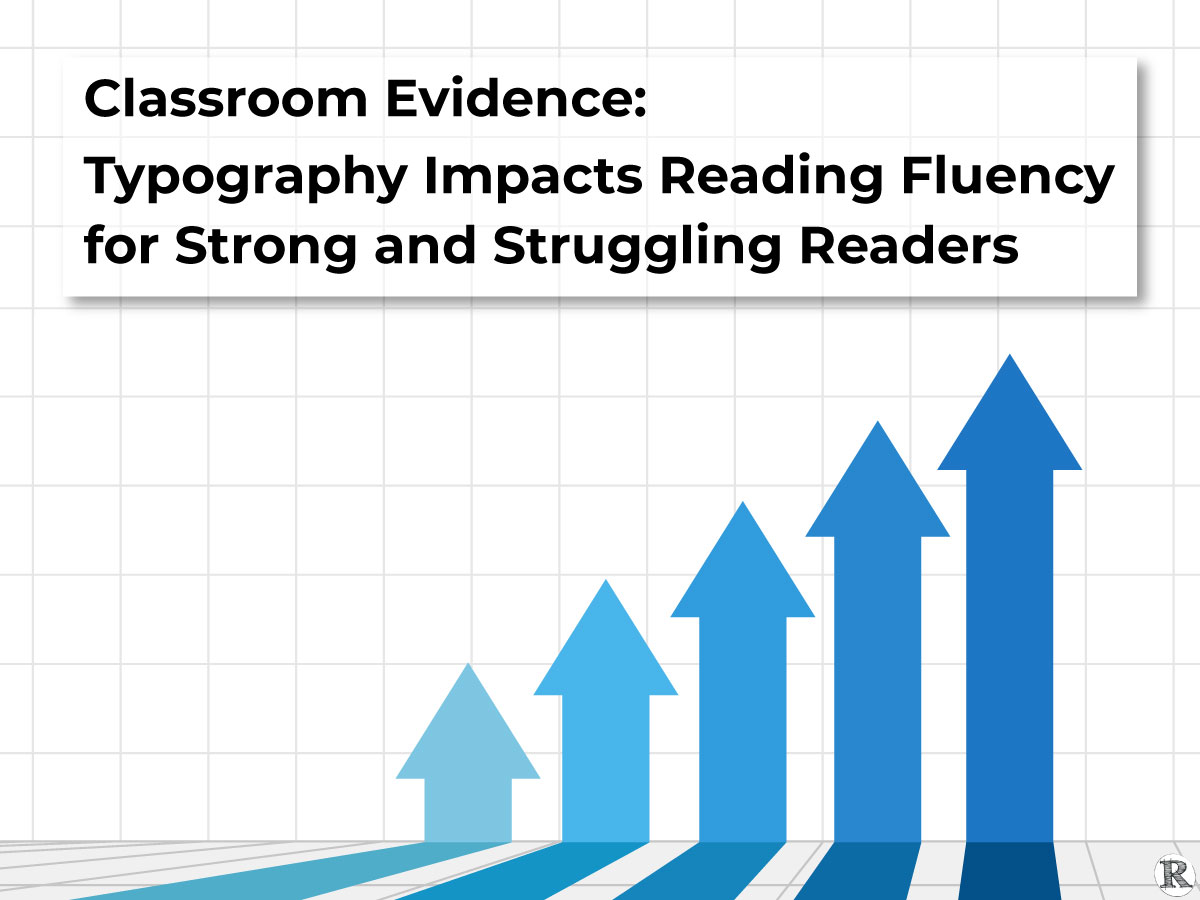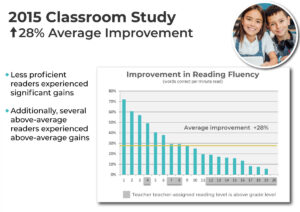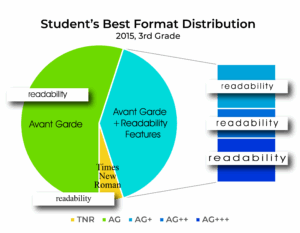95% of Students Read Better with Personalized Text Formats
Much more than a simple design choice, Typography directly impacts how well individuals read. Research demonstrates that adjusting text size, shape, and spacing can enhance reading performance for struggling and dyslexic readers. However, the anecdotal evidence suggested a much broader impact. (See Henry’s Story and Claire’s Story.)
In a 2015 study of a third-grade public school classroom, 95% of students improved their reading fluency with a simple change to the text format. Across the classroom, an average gain of 28% in words correct per minute was recorded when students transitioned from a standard textbook format to one that better suited their needs. Some students who were already reading above grade level achieved above-average gains using an alternative text format. The students had different best formats; none of the formats tested was the best for all proficient students, or all less proficient students.
The study highlighted two key points:
No single text format works best for all readers.
Even strong readers can benefit from typographic adjustments.
With the digital platforms available today in educational settings, small but powerful changes to text format are possible. Personalized text to support each reader’s optimal reading experience and performance can be delivered at scale.
 Read the Readability Matters White Paper:
Read the Readability Matters White Paper:
Classroom Evidence: Typography Impacts Reading Fluency for Strong and Struggling Readers
Learn more about the subtle changes to text size, shape and spacing that produced an instantaneous difference in the student’s reading ability.






